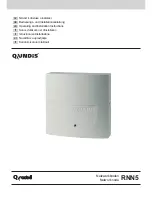
Transition Networks
S4224 Web User Guide
33558 Rev. C
Page 146 of 669
The port with the highest priority in an aggregate trunk carries broadcast packets and packets with
an unknown destination.
Before creating an aggregate trunk between a TN device and another vendor’s device, refer to the
vendor’s documentation to determine the maximum number of active ports the device can support
in a trunk. If less than eight, the maximum number for the S4224, assign the other vendor’s device
a higher system LACP priority than your S4224. This helps avoid a conflict between the devices if
some ports are put in standby mode when the devices create the trunk.
The
Configuration
>
Aggregation
>
LACP
menu path is used to configure the Aggregation hash mode
and the aggregation group from the LACP Port Configuration table.
Note
: LACP and Static aggregation
cannot both be enabled on the same ports at the same time.
This page lets you view and modify the following LACP port parameters.
Port
The S4224 port number. The
*
in the Port column acts as a ‘wild card’ character which causes the
selections in this row to be applied to all other rows in the table for which this selection is valid.
LACP Enabled
Controls whether LACP is enabled on this S4224 port. LACP will form an aggregation when 2 or more
ports are connected to the same partner. The S4224 can support up to four LAGs (assuming two
ports in each LAG). LACP cannot be enabled on ports whose 802.1X Admin State is not Authorized.
To configure the Spanning Tree function, use the
Configuration
>
Spanning
Tree
>
CIST
Ports
>
CIST
Normal
Port
Configuration
menu path in the “STP Enabled” column.
Key
The
Key
value incurred by the port, range 1-65535 . The
Auto
setting will set the key as appropriate
by the physical link speed, 10Mb = 1, 100Mb = 2, 1Gb = 3. Using the
Specific
setting, a user-
defined value can be entered. Ports with the same Key value can participate in the same aggregation
group, while ports with different keys cannot. The default is
Auto
.
Auto
matic key generation is based on port speed (10Mb = 1, 100Mb = 2, 1Gb = 3), so if all involved
ports are with the same speed, it will look only one LACP group is supported with only one
automatically assigned key.
To create more LACP groups, try different speeds on ports or manually designate different keys.
















































